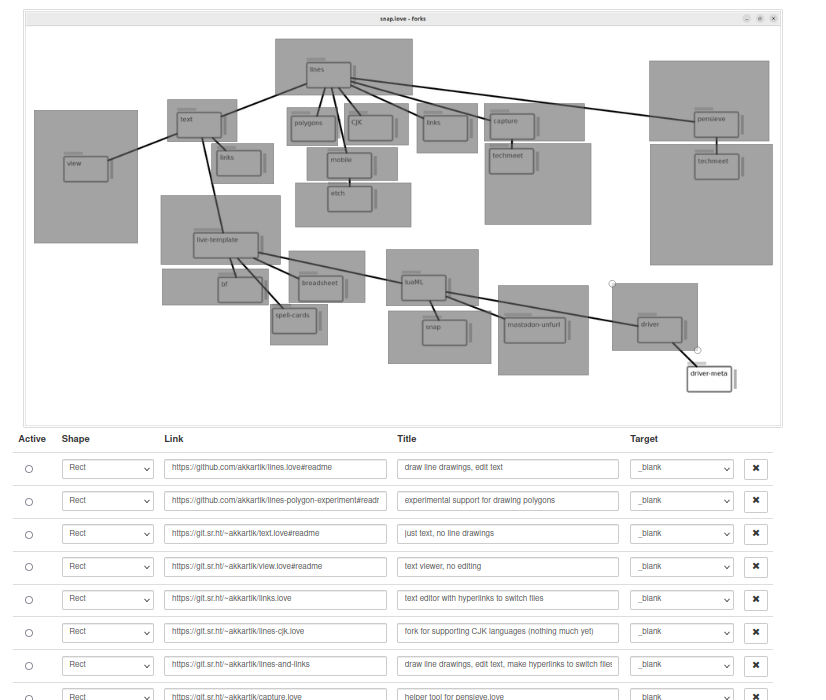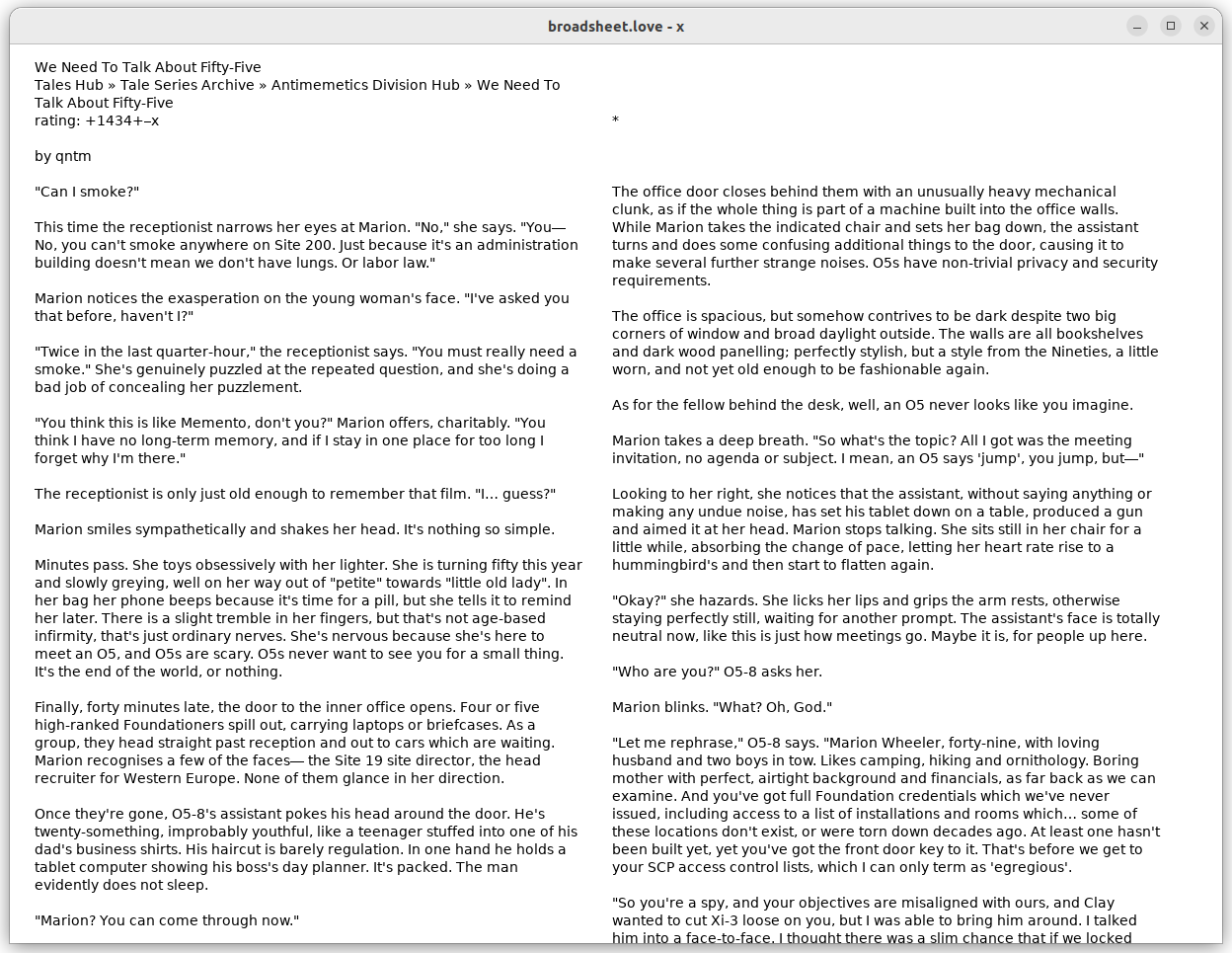$ echo "never worn" |sed 's/ /^M/g'
wornr
What is going on here?
$ echo "never worn" |sed 's/ /^M/g'
wornr
What is going on here?
All in all, I'm much happier with my server. It's leaner, runs less stuff, and it'll be easier to move next time. With the way we've been seeing services degrade lately, I think it's useful to be thoughtful about how we cobble together our personal digital infrastructure, architect it to be nimble and easy to move around. If you keep options open you'll be less likely to need to use them.
Hopefully there's no discernable difference from the outside :crossed_fingers:
'-'.
Today's head-scratcher:
> ('00-43'):match('^(%d%d)-(%d%d)')
00 43
> ('00-43'):match('^%d%d-(%d%d)')
nil
I should just always escape it ('%-') as a matter of course.
My Freewheeling Apps kinda abuse git, and I've been watching for problems to arise from this friction.
Most software tries to keep branches short-lived. Merging is the point of a branch. My apps are long-lived forks that never merge, only occasionally cherry-pick.
Today I noticed a pattern: a file has been deleted in a fork and reintroduced in a later fork. Changes to it won't make it over that chasm without manual help.
How big is this problem? I wrote a quick and dirty visualizer which highlights chasms as the black lines. The short lines are false positives, so it's not a big problem. Yet.
How I built this:

After I posted my talk yesterday, Konrad Hinsen suggested appending a list of links to all the forks I mentioned. Searching around, I found a neat service called image-map.net which made my image of forks clickable with relatively low effort.
The only drawback: link coordinates are not normalized. So if you resize your the links all break.



Once more at this. This time after seeing Hexagony.
One problem I have with Befunge (not the one you're thinking of, ha) and other fungeoids is that you have a bunch of static information about a program visible in 2D on screen, but a key piece -- the stack -- is invisible. The question I keep returning to is how one might go about making the stack (or any other run-time state used by the program) visible without just bolting it on on the side. This time around, I got hooked on the following metaphor. Imagine a spaceship that contains some data, sets out on a voyage across an infinite 2D plane, and performs various operations depending on the objects it collides with.
Example 1: The space ship contains a row of boxes. Colliding with a number pushes a box on to the nose, colliding with an operator operates on the 1 or 2 front-most boxes in the front. This is a way to display a stack, but a stack in isolation doesn't seem to scale well to larger programs.
Example 2: The spaceship contains a number. Colliding with the BF-inspired primitives + and - causes the number to be incremented and decremented, respectively. Now build addition out of it. Zooming into a number n shows it to be a loop of n iterations. When the spaceship collides with n it loops through n times, and the number inside it has n added to it. At a high zoom, you see the spaceship loop n times before exiting the "solar system". At a low zoom you see the spaceship exit instantaneously with n added to its value. Now you can imagine a reduce operation as a series of solar systems that the spaceship visits one by one.
Example 3: The spaceship contains a binary heap to insert and delete elements from depending on objects it collides with. Zooming into any single collision reveals the tree structure to be the "space" that a smaller spaceship containing a single number bounces among.
Two properties that seem important from these examples:
At the largest scale, state machines feel like a really powerful way to represent the state within a spaceship. I often find them to be the outermost architecture of a large program. But to actually find the state machine I have to flail around for a long time. If we could use some visual paradigm at the largest scales but zoom into text as needed, programs might be much more comprehensible.
In a bare-bones template repo (~500 LoC).
In a more elaborate template with testable primitives and an editor widget.
Open it on a browser tab when you clone and start editing using driver.love. There are a few examples in the Readme to spark ideas. Works on any Windows and Unix.